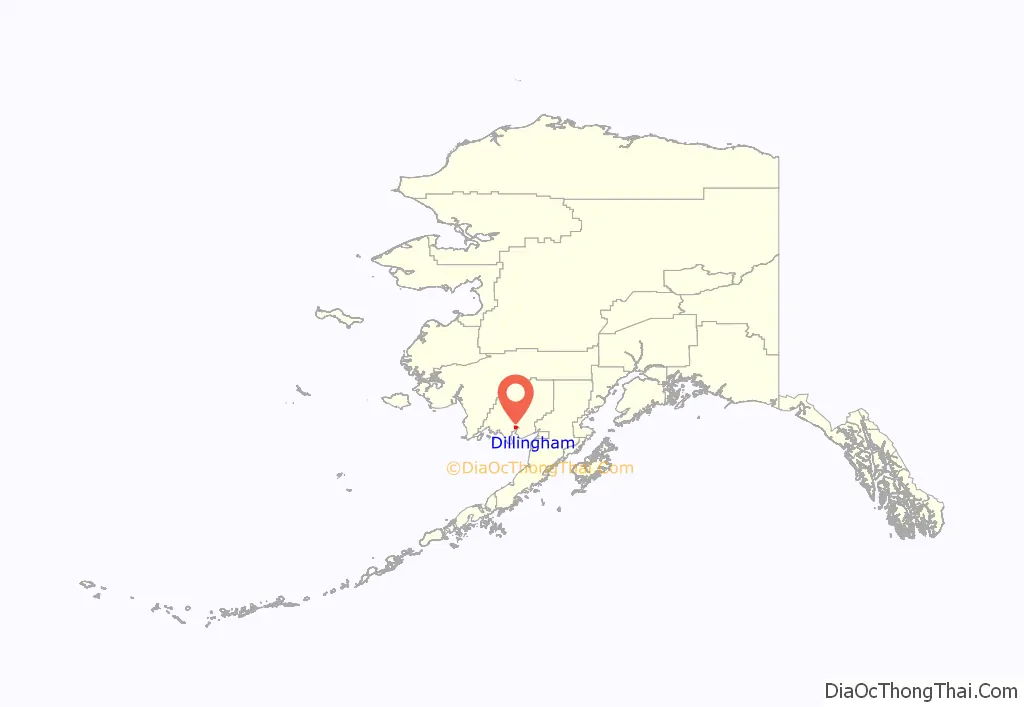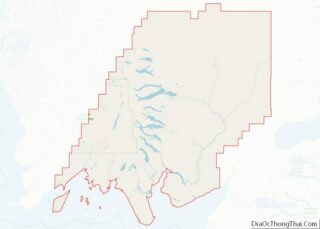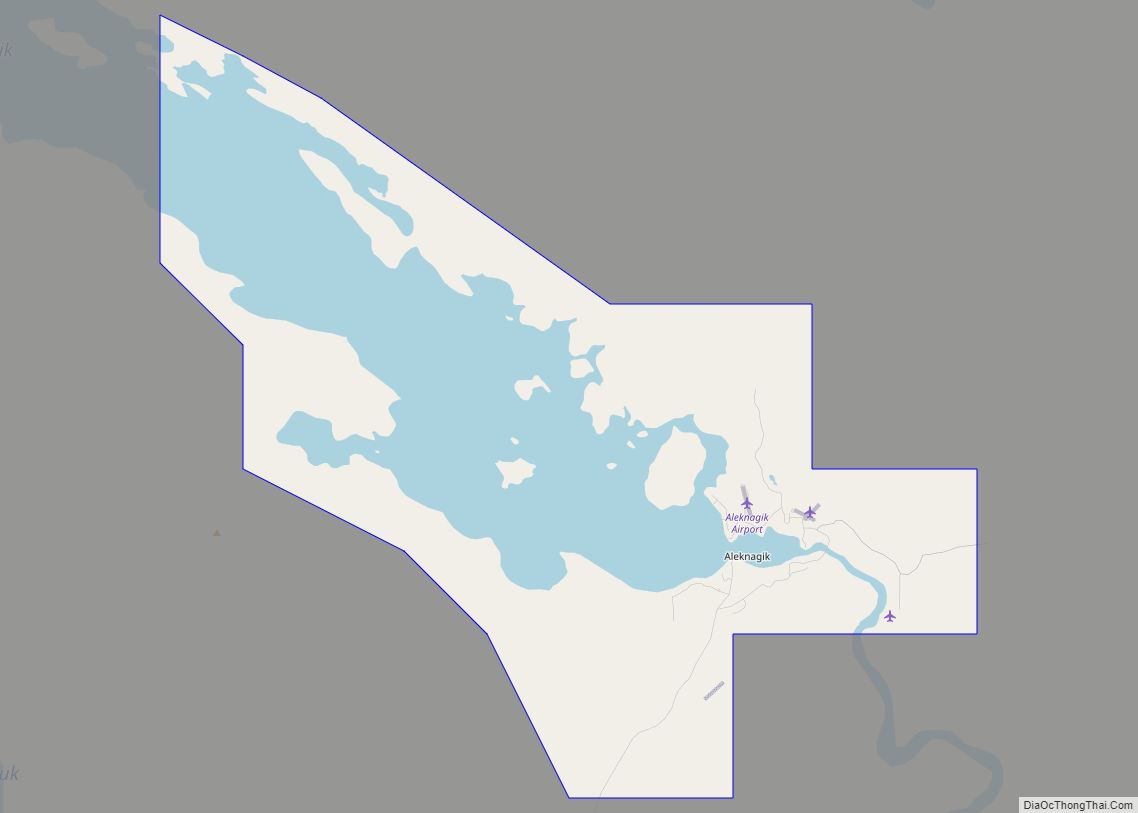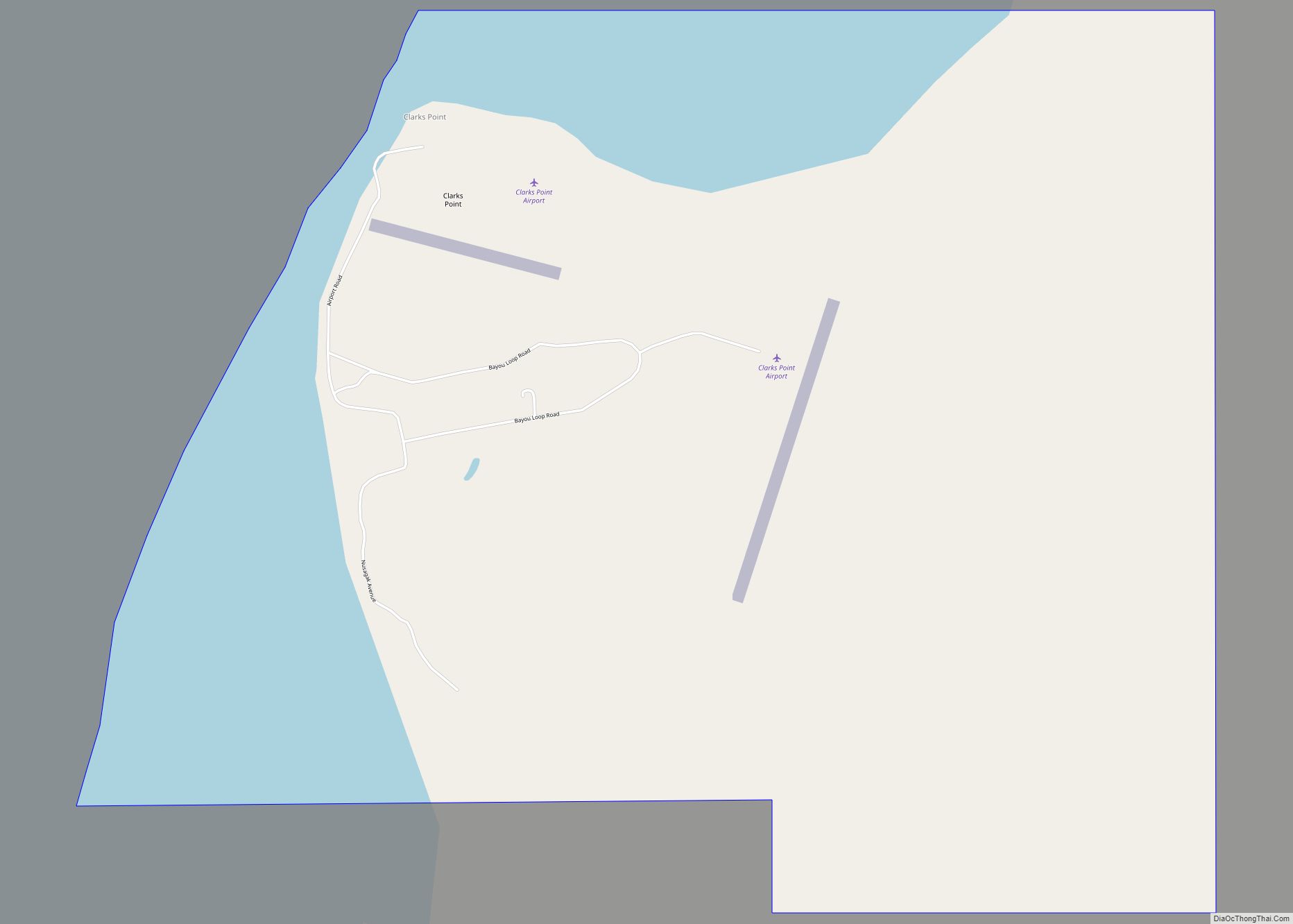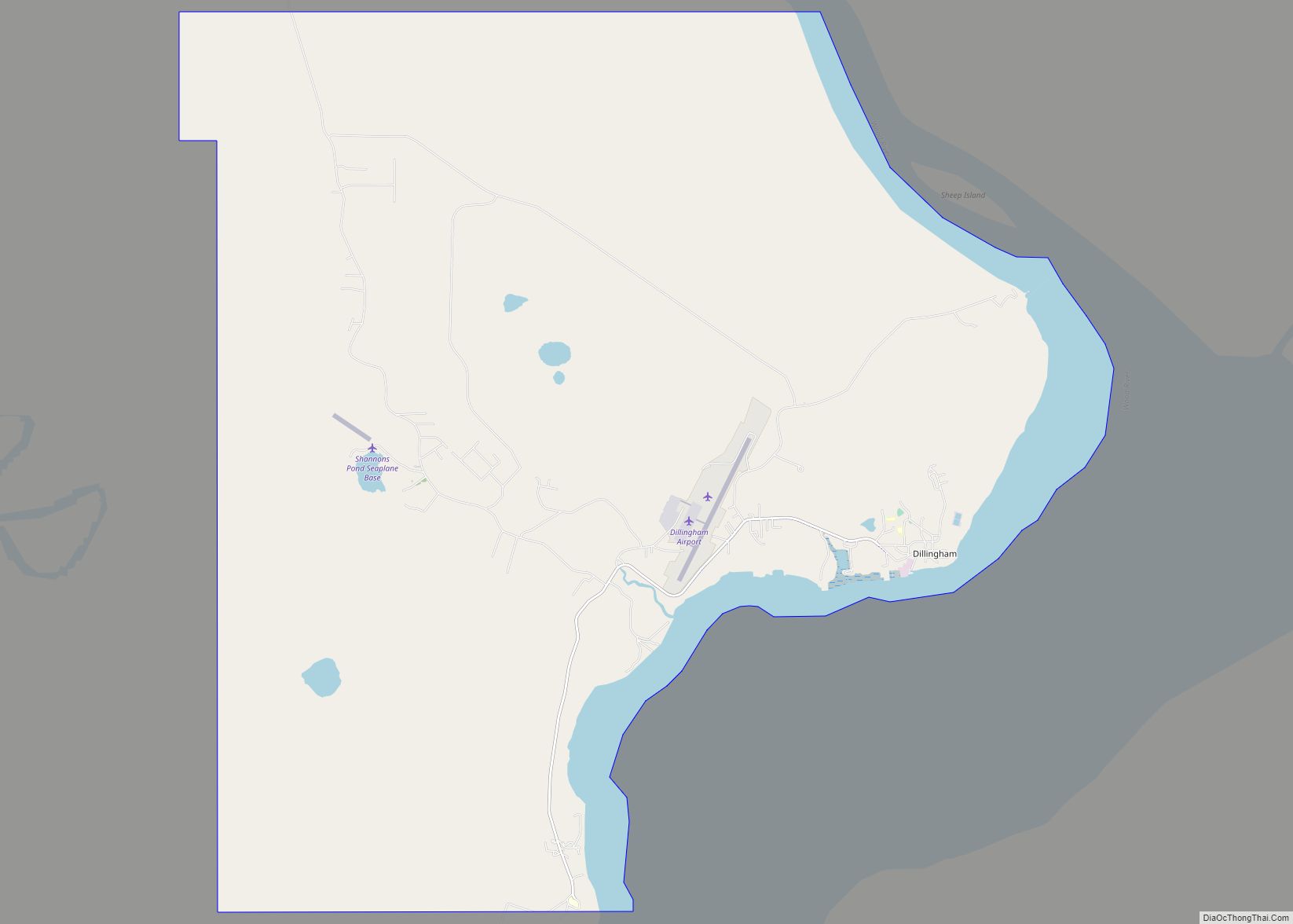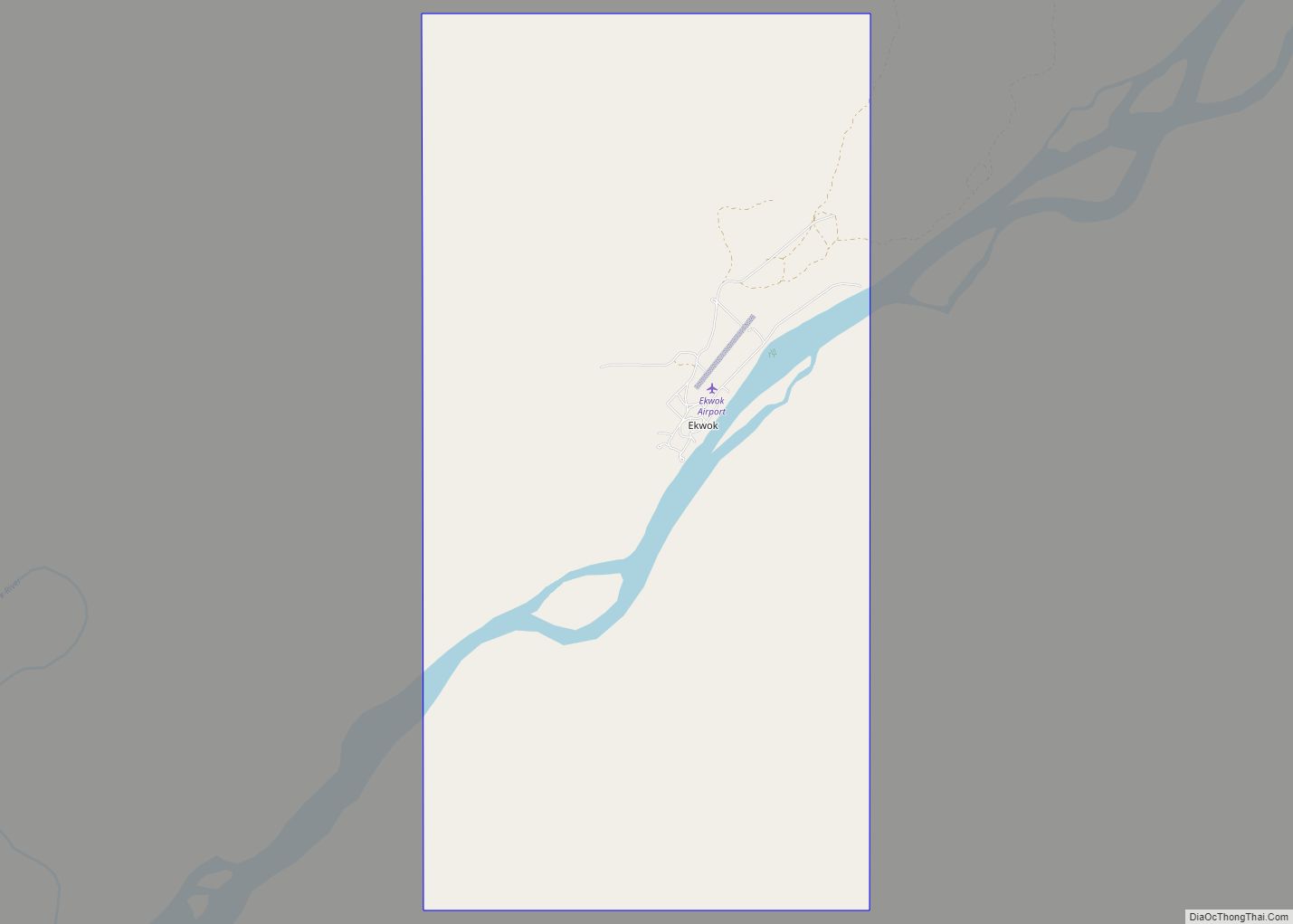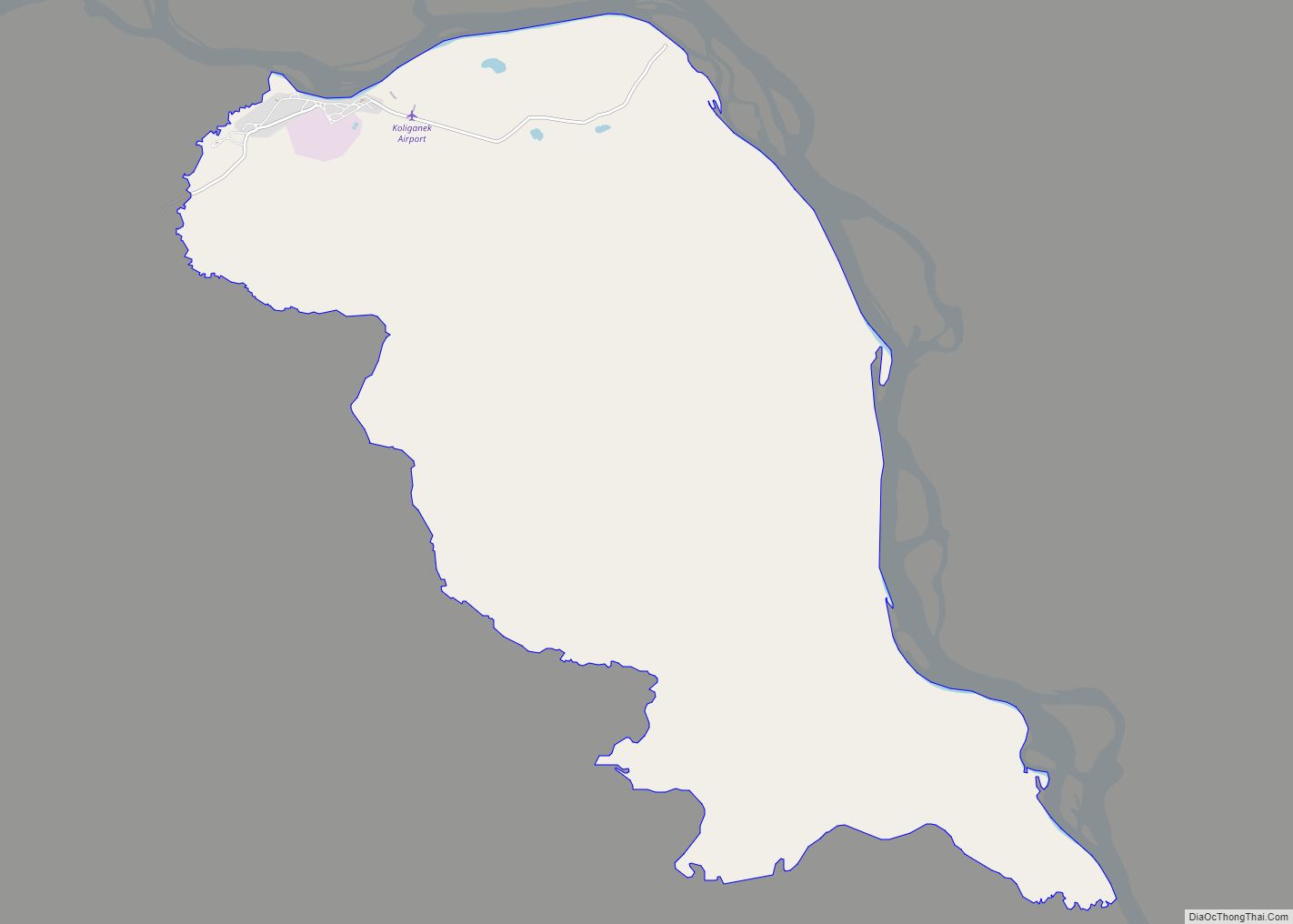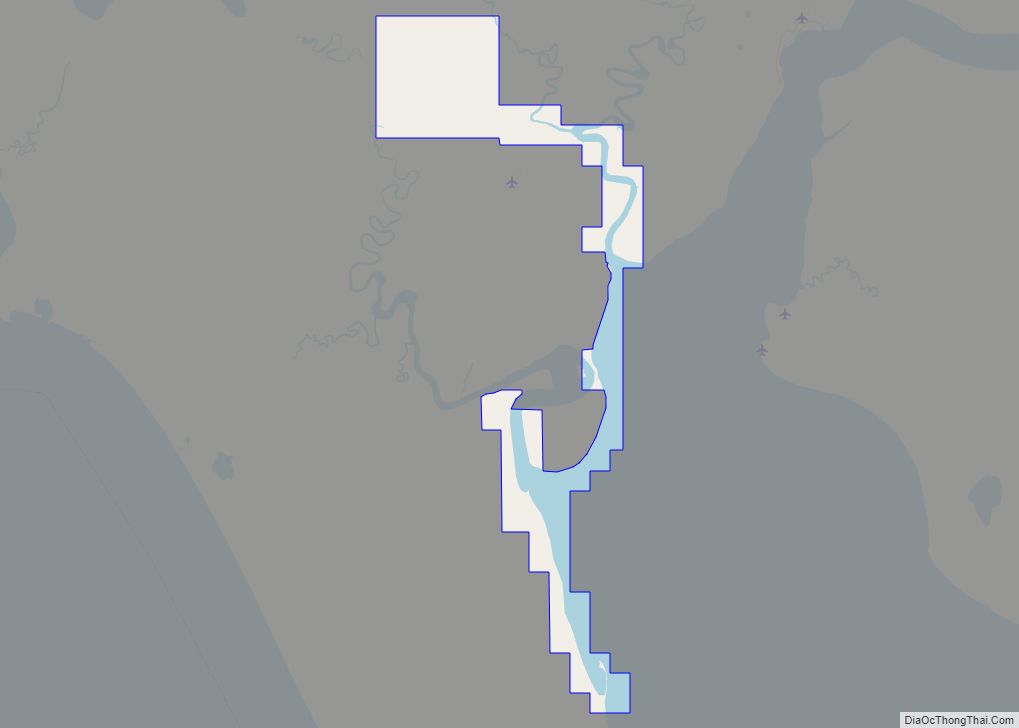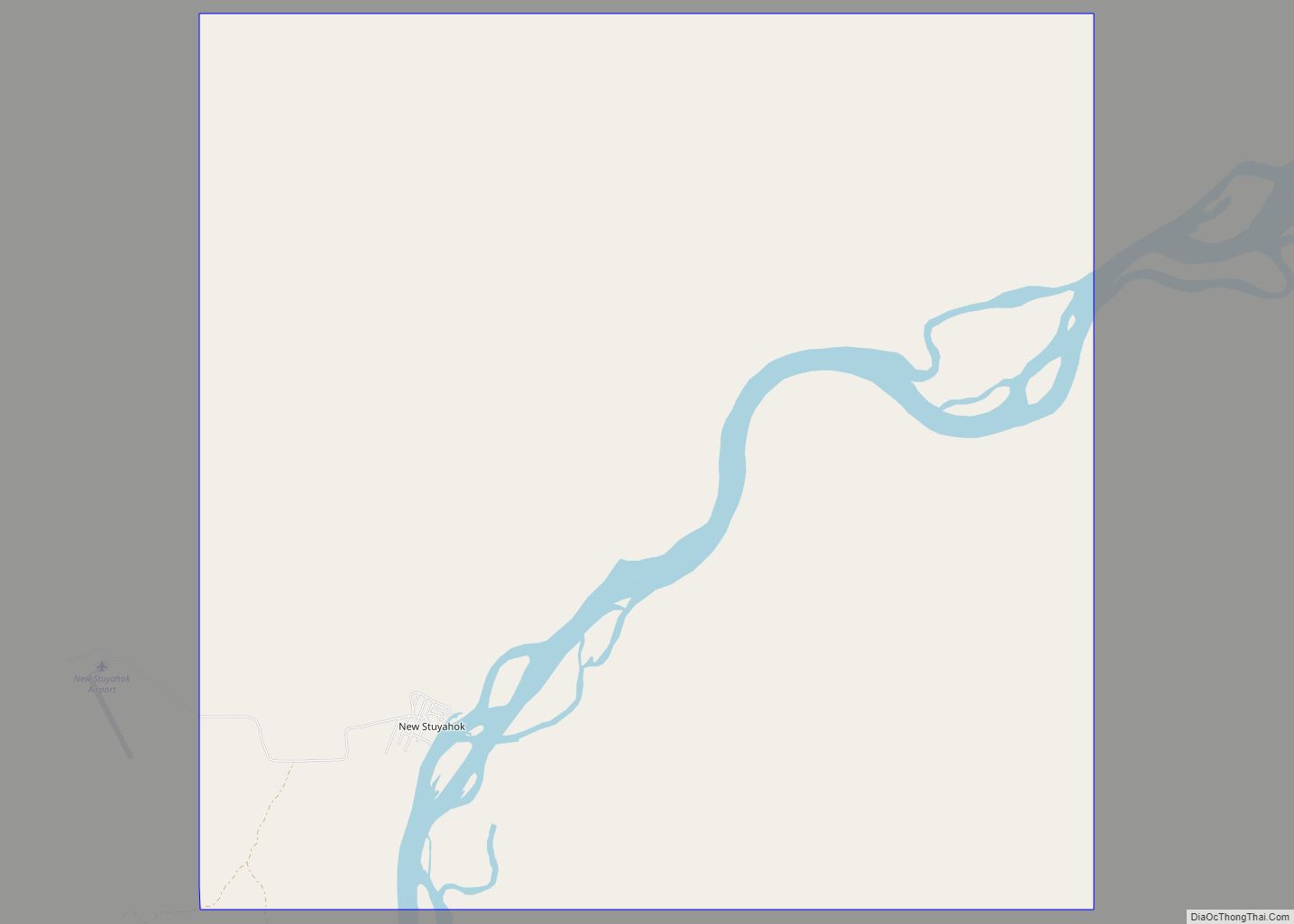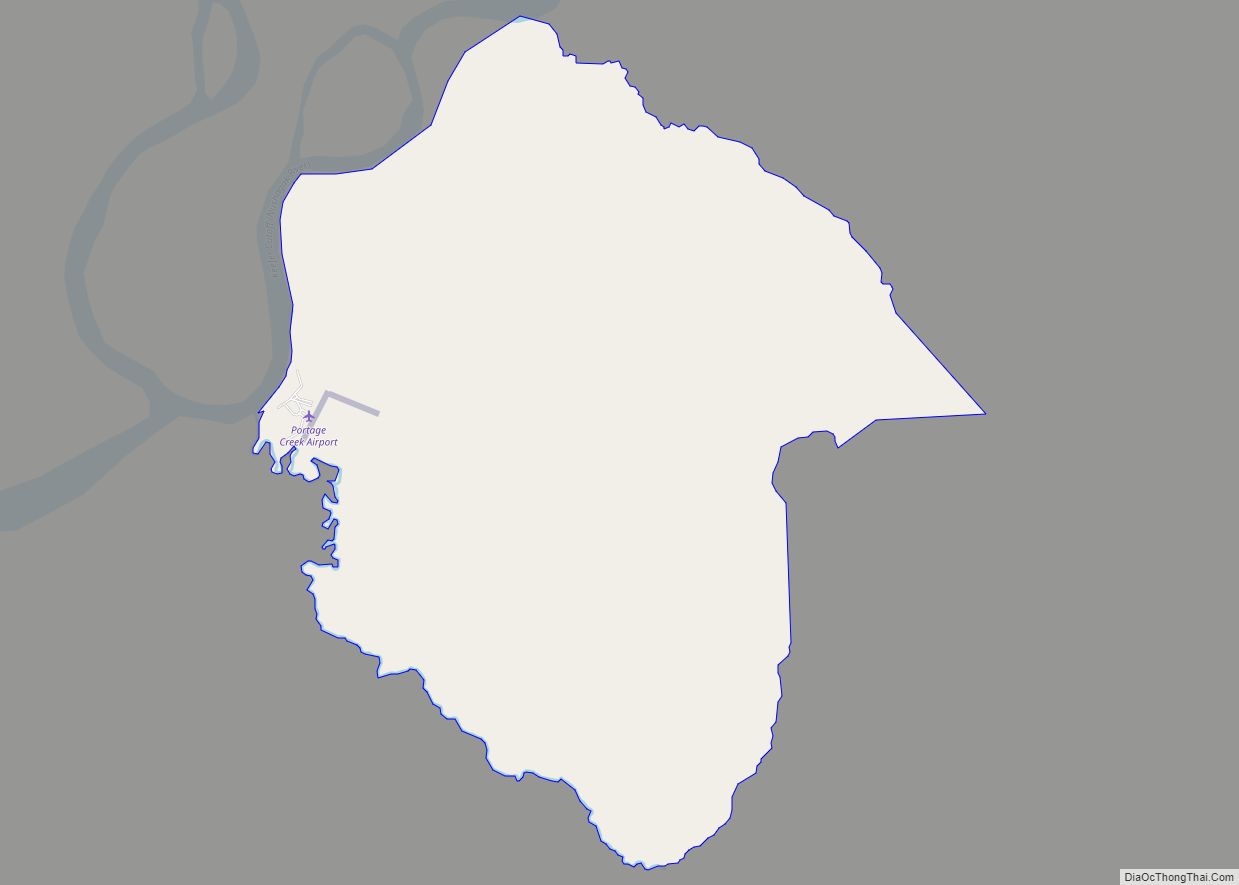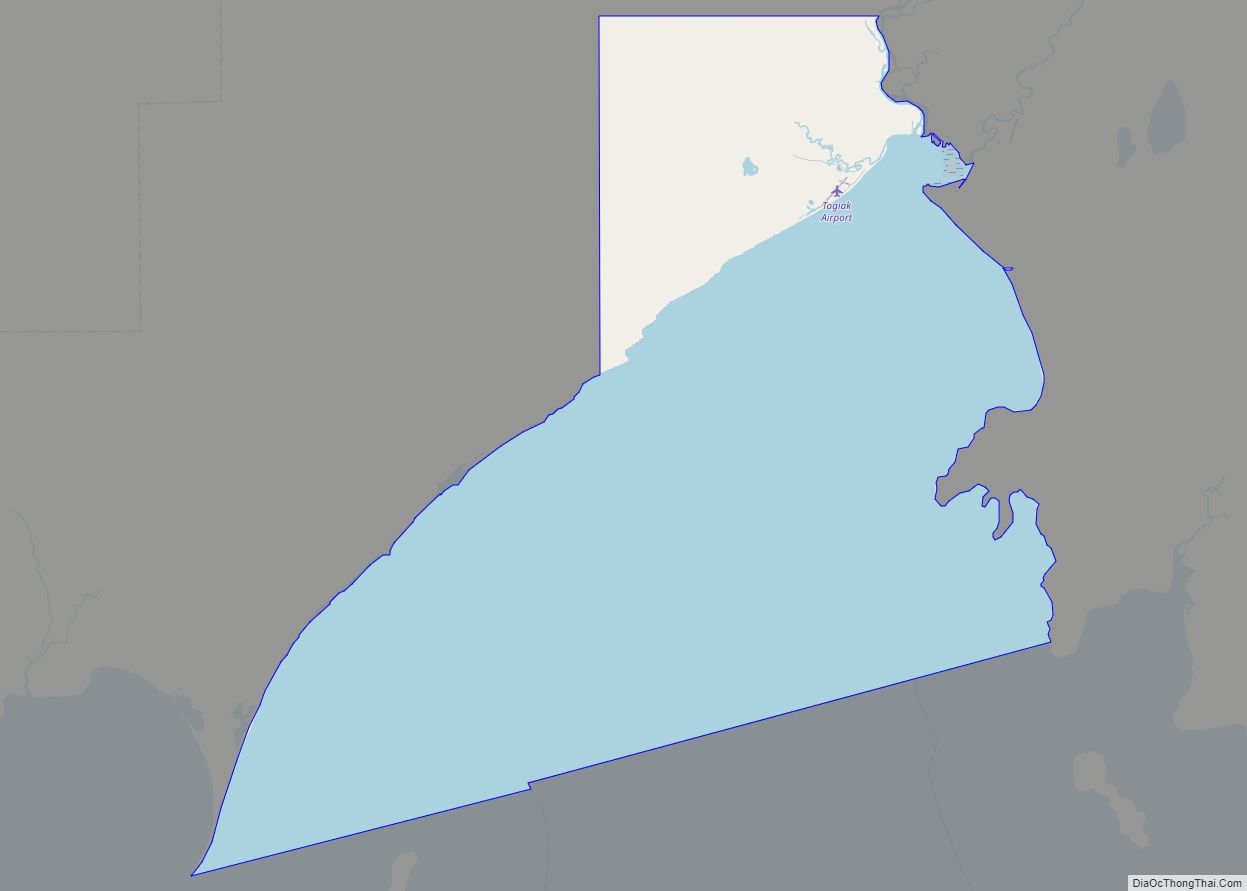Dillingham /ˈdɪlɪŋhæm/ (Central Yupik: Curyung; Russian: Диллингхем), also known as Curyung, is a city in Dillingham Census Area, Alaska, United States. Incorporated in 1963, it is an important commercial fishing port on Nushagak Bay. As of the 2020 census, the population of the city was 2,249, down from 2,329 in 2010.
| Name: | Dillingham city |
|---|---|
| LSAD Code: | 25 |
| LSAD Description: | city (suffix) |
| State: | Alaska |
| County: | Dillingham Census Area |
| Incorporated: | July 12, 1963 |
| Elevation: | 95 ft (29 m) |
| Total Area: | 36.07 sq mi (93.41 km²) |
| Land Area: | 33.34 sq mi (86.35 km²) |
| Water Area: | 2.73 sq mi (7.06 km²) |
| Total Population: | 2,249 |
| Population Density: | 67.45/sq mi (26.04/km²) |
| ZIP code: | 99576 |
| Area code: | 907 |
| FIPS code: | 0218950 |
| GNISfeature ID: | 1401203 |
| Website: | dillinghamak.us |
Online Interactive Map
Click on ![]() to view map in "full screen" mode.
to view map in "full screen" mode.
Dillingham location map. Where is Dillingham city?
History
The area around Dillingham was inhabited by the Yup’ik people for millennia. British Captain James Cook first charted the Bristol Bay region in 1778 but did not venture into Nushagak Bay. The Russian-American Company built a redoubt (trading post) at Nushagak Point across the river from present-day Dillingham in 1818. Named “Alexandrovski” after the czar, the post attracted fur traders from as far as the Kuskokwim River, the Alaska Peninsula and Cook Inlet. In 1837, a Russian Orthodox mission was built at Nushagak, but the post status was later downgraded in favor of other Russian-American Company posts in the Kuskokwim.
In 1881, after the Alaska Purchase by the United States, the United States Signal Corps built a weather station at Nushagak.
The Arctic Packing Company built the first cannery in Bristol Bay in 1883 at Kanulik, across the river from the site of modern-day Dillingham. Operations began the following year with a pack of 400 cases of salmon, or 19,200 1-pound cans. By 1903 a total of ten canneries had been built along the Nushagak River, including four within the current city’s limits, and produced as much as one million cases of canned salmon annually. Most of these canneries were closed for a variety of reasons, including coastal erosion, siltation, consolidation, and as production shifted to frozen salmon.
In 1901, the Alaska-Portland Packers Association built a cannery near Snag Point, what is now the city’s central business district. The cannery burned down in 1910 but was rebuilt the following year. It was acquired by Pacific American Fisheries in 1929. Now known as Peter Pan Seafoods, the cannery in downtown Dillingham remains operational, and other seafood companies maintain offices and support facilities within the city’s limits.
A courthouse was built in Kanakanak in 1903 and named after United States Senator William Paul Dillingham of Vermont, whose Senate subcommittee investigated conditions in Alaska following the 1898 gold rush. Despite extensive travels throughout the territory, neither Dillingham nor his subcommittee ever set foot in the Bristol Bay region. The post office later adopted the name, as did the community.
In 1918 and 1919, the global Spanish influenza pandemic struck Bristol Bay and left no more than 500 survivors around Dillingham. A hospital and orphanage were established in Kanakanak after the epidemic, 6 miles (10 km) south of downtown Dillingham. An Indian Health Service hospital operated by the Bristol Bay Area Health Corporation remains at Kanakanak.
The Dillingham News, the first local newspaper, was published in 1947 by the Dillingham Volunteer Fire Department as a way to attract new members. It was soon succeeded by the Beacon of Dillingham, a newspaper closely aligned by the unions of resident fishermen and cannery workers. Both were simple mimeograph editions.
In 1951, powerboats were first allowed to replace sailboats used by fishermen in the Bristol Bay salmon fishery.
The City of Dillingham incorporated as a first class municipality in 1963.
In 1974, the first regional AM radio station for the Bristol Bay region was built by the Dillingham City School District under an educational grant. With the call letters KDLG and operating at 670 kHz, the station continues to provide education, entertainment, and important safety information to the fishing fleet and the surrounding communities. It is part of the National Public Radio (NPR) and Alaska Public Radio (APRN) networks.
Present-day industries around Dillingham are commercial salmon and herring fishing, seafood processing, sport fishing, government-related jobs and tourism.
Dillingham attracted national attention in 2006 when the City of Dillingham installed 80 cameras at city-owned facilities such as the dock, harbor and police station, funded by a Department of Homeland Security grant. The city justified them by stating that they enhanced the ability to monitor and enforcement at those facilities. Many criticized the project as an infringement on privacy and also that the funds were intended for national rather than local public safety issues. After spirited public debate, locally and nationally, the community held a referendum vote on the system on October 12, 2006, resulting in a rejection of the anti-camera initiative by a vote of 370 to 235.
On August 9, 2010, a DHC-3T Texas Turbine Otter crashed near Dillingham due to fog and reduced visibility. Former President Pro Tempore and Senator Ted Stevens was among the five killed aboard the plane. There were four survivors, including former NASA Administrator and EADS executive Sean O’Keefe.
On September 2, 2015, President Obama visited Dillingham as a part of his trip around Alaska to call attention to climate change.
Dillingham Road Map
Dillingham city Satellite Map
Geography
Dillingham is on Nushagak Bay at the mouth of the Nushagak River, an inlet of Bristol Bay, an arm of the Bering Sea in the North Pacific, in southwestern Alaska. It is located at 59°02′48″N 158°30′31″W / 59.04667°N 158.50861°W / 59.04667; -158.50861 (59.046751, -158.508665).
According to the United States Census Bureau, the city has a total area of 36.3 square miles (94.1 km). 33.6 square miles (86.9 km) of it is land, and 2.8 square miles (7.2 km) of it (7.64%) is water. This may change as the City of Dillingham will likely petition the State of Alaska to increase the size of its boundaries to include most of Nushagak Bay and Wood River, to gain revenue from the Nushagak District and Wood River Special Harvest Area commercial salmon fisheries.
Dillingham is located in the 37th district of the Alaska House of Representatives, and is represented by Independent Bryce Edgmon, who serves as Speaker for the Alaska House of Representatives.
See also
Map of Alaska State and its subdivision:- Aleutians East
- Aleutians West
- Anchorage
- Bethel
- Bristol Bay
- Denali
- Dillingham
- Fairbanks North Star
- Haines
- Juneau
- Kenai Peninsula
- Ketchikan Gateway
- Kodiak Island
- Lake and Peninsula
- Matanuska-Susitna
- Nome
- North Slope
- Northwest Arctic
- Prince of Wales-Outer Ketchi
- Sitka
- Skagway-Yakutat-Angoon
- Southeast Fairbanks
- Valdez-Cordova
- Wade Hampton
- Wrangell-Petersburg
- Yukon-Koyukuk
- Alabama
- Alaska
- Arizona
- Arkansas
- California
- Colorado
- Connecticut
- Delaware
- District of Columbia
- Florida
- Georgia
- Hawaii
- Idaho
- Illinois
- Indiana
- Iowa
- Kansas
- Kentucky
- Louisiana
- Maine
- Maryland
- Massachusetts
- Michigan
- Minnesota
- Mississippi
- Missouri
- Montana
- Nebraska
- Nevada
- New Hampshire
- New Jersey
- New Mexico
- New York
- North Carolina
- North Dakota
- Ohio
- Oklahoma
- Oregon
- Pennsylvania
- Rhode Island
- South Carolina
- South Dakota
- Tennessee
- Texas
- Utah
- Vermont
- Virginia
- Washington
- West Virginia
- Wisconsin
- Wyoming
